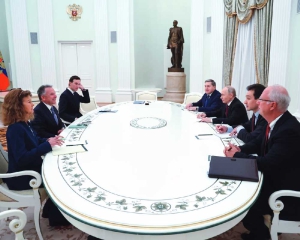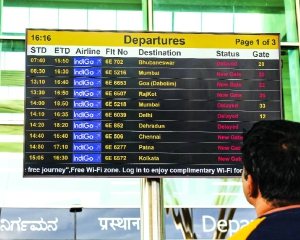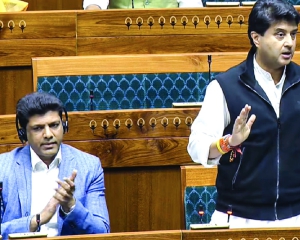The number of days with severe and very poor levels of PM 2.5 concentration have been comparatively lower this winter but the number of days with concentration level in the poor category have registered an increase.
According to the latest Center for Science and Environment (CSE) report on Delhi- NCR winter pollution, the overall city-wide average for the season has been comparatively higher this year. However, citywide average pollution for the winters was seven percent higher than the seasonal average of 2019-20 winters. Except Wazirpur and Sahibabad, all the locations on Delhi-NCR pollution hotspots list saw a spike in the seasonal PM2.5 level compared to last winter. Jahangirpuri with a seasonal average of 256 µg/m3 was the dirtiest among the recognized hotspots. Bahadurgarh that recorded almost 50 per cent jump in PM2.5 level was cleaner than other hotspots.
As per the report, except Wazirpur and Sahibabad, all the locations on Delhi-NCR pollution hotspot list saw spike in the seasonal PM2.5 level compared to last winter.
Jahangirpuri with a seasonal average of 256 µg/m3 was the dirtiest among the recognized hotspots. Bahadurgarh that recorded almost 50 per cent jump in PM2.5 level was cleaner than other hotspots.
“There is always a special interest in understanding winter pollution trends -- given the extraordinary situation due to the pandemic this year, as well as the fact that winter remains the most difficult season in this region due to atmospheric conditions of inversion, calm wind, and cold weather,†says Anumita Roychowdhury, executive director-research and advocacy, CSE, and the head of its sustainable urbanisation, air pollution and mobility
programmes.
“The trapped winter air traps local and regional pollution in turn, and gives rise to the deadly winter smog that we, the residents of Delhi-NCR, are so familiar with,†she added.
CSE in its report, further said number of days with severe concentration of PM2.5 declined and smog episodes were of shorter duration. “This winter 23 days had citywide average of PM2.5 concentration in “severe’ or worse AQI category, this is down from 25 such days in pervious winter and 33 days in 2018-19 winters,†the report said.
Illustrating the pollution patterns, the CSE report highlighted that there was a decline in number of severe and worse air days. “Technically, a smog episode is defined for the purpose of implementing emergency action under the Graded Response Action Plan when the levels of PM2.5 remain in “severe†category for three consecutive days. From this perspective, this winter there were two continuous smog episodes. The first episode was of longer duration as it started on 3rd Nov and lasted 7 days. The second started on 22nd December and lasted for 3 days Thus the continuous smog episodes are fewer and shorter compared to previous winters. 2019-20 winter had three smog episodes of 8 days, 6 days and 5 days durations. 2018-19 winter had four smog episodes of 10 days, couple of 6 days and a 3 days durations.â€
However, during the winter months, at least 14 more locations registered higher seasonal average than the mean of recognized hotspots, i.e. 197 µg/m3 These were Alipur, DTU, ITO, Nehru Nagar, Patparganj, Sonia Vihar and Vivek Vihar in Delhi, Sector 1 and 116 inNoida, Loni, Sanjay Vihar and Indirapuram in Ghaziabad, Knowledge Park V in Greater Noida and Bulandshahr. This again points towards impact of local pollution.
Eight towns show improvement in seasonal average from last year with Bhiwani and Palwal in Haryana showing the most improvement (exceeding 60 per cent). But Sonipat (69 per cent) and Bahadurgarh (49 per cent) lead the pack of towns with maximum detoriation in seasonal average. It is noteworthy that Hapur and Bulandshahr are neighbours but Hapur saw 24 per cent improvement while Bulandshahr deteriorated by 32 per cent. In fact, the seasonal average of Bulandshahr is three times that of Hapur.

























